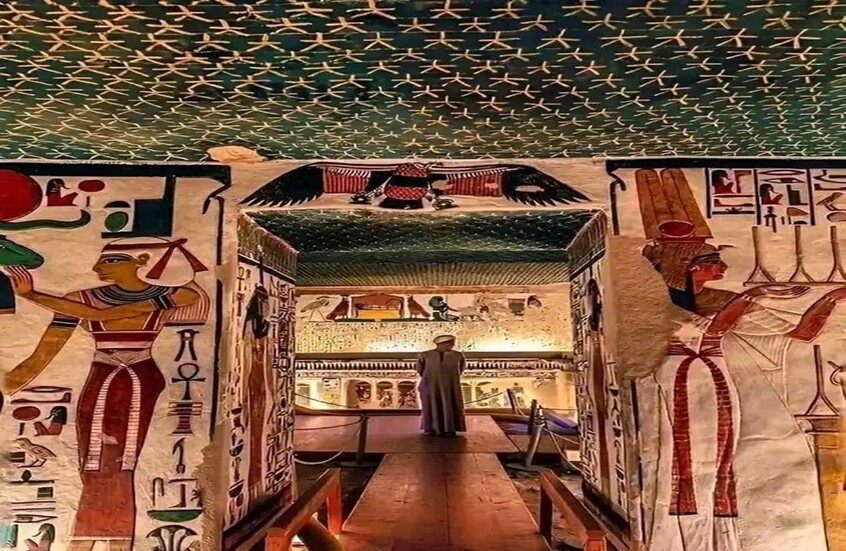After more than two centuries since its discovery .. Egypt opens the tomb of King Amenhotep III in the Valley of the Kings
October 4, 202549 ViewsRead Time: 2 minutes

Font Size:
16
Egypt opened today, Saturday, in the historic city of Luxor in Upper Egypt, a rare royal tomb belonging to King Amenhotep III, nearly 226 years after its discovery.
The tomb was inaugurated in the presence of Minister of Tourism and Antiquities Sherif Fathy and several senior officials in Luxor Governorate and the Supreme Council of Antiquities.
The tomb is located in the Valley of the Kings, which contains hundreds of royal tombs carved for the kings of ancient Egypt in the Theban necropolis. The tomb is a unique example of the evolution of royal burial styles, as Amenhotep III chose to have his tomb carved in a mountain pass away from sight, contrary to the traditions that dictated building tombs near the banks of the Nile.
According to archaeological sources in Luxor, the tomb was discovered in 1799 by the Frenchmen Rossier Goulouah and Edward de Villiers de Tiraque, with indications that the British traveler William George Brown had referred to it in his memoirs before that date.
The restoration and rehabilitation work took about 20 years with the support of UNESCO and the Japanese government, and included precise architectural restoration operations, the installation of environmental control systems, as well as the collection and restoration of the archaeological artifacts found inside the tomb.
The architectural design of the tomb is characterized by precision and grandeur, beginning with a hidden entrance behind a prominent rock leading to a long corridor that leads to a chamber with two columns, followed by corridors connected to the main burial chamber supported by six massive columns, in addition to seven side chambers branching from the corridors.
The wall decorations represent an exceptional aspect of ancient Egyptian funerary art, as the walls were covered with a layer of colored plaster depicting the nightly journey of the sun through twelve hours, symbolically referring to the concept of resurrection and immortality in ancient Egyptian religion.
The tomb is a fundamental reference for studying funerary style and religious symbolism in the Modern State period, and it represents an artistic and architectural model to be emulated in the tombs of the kings who succeeded Amenhotep III.